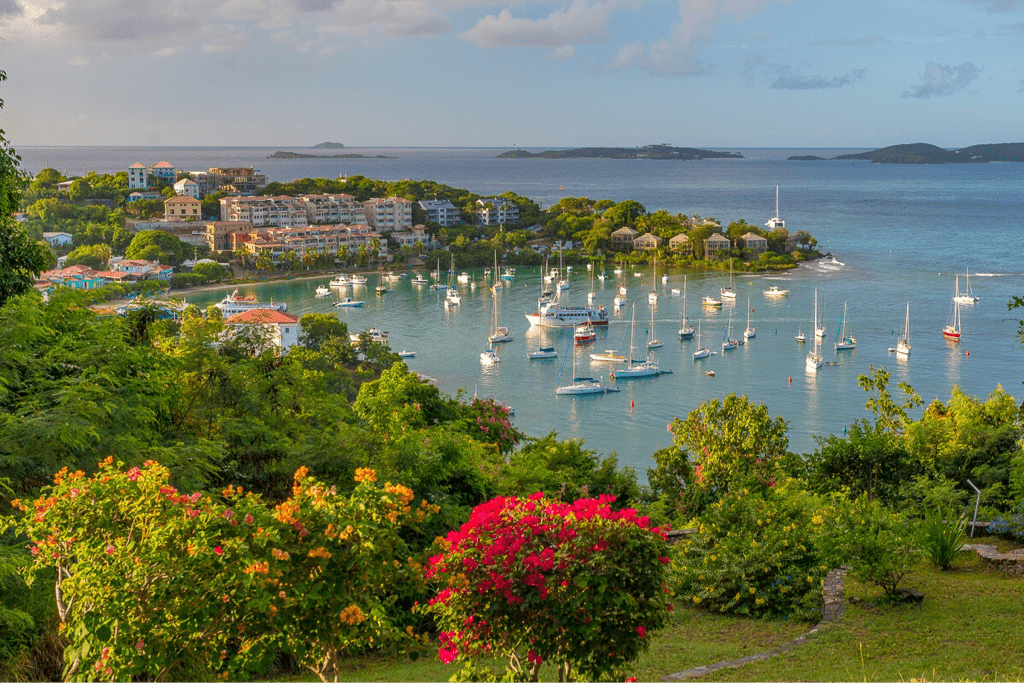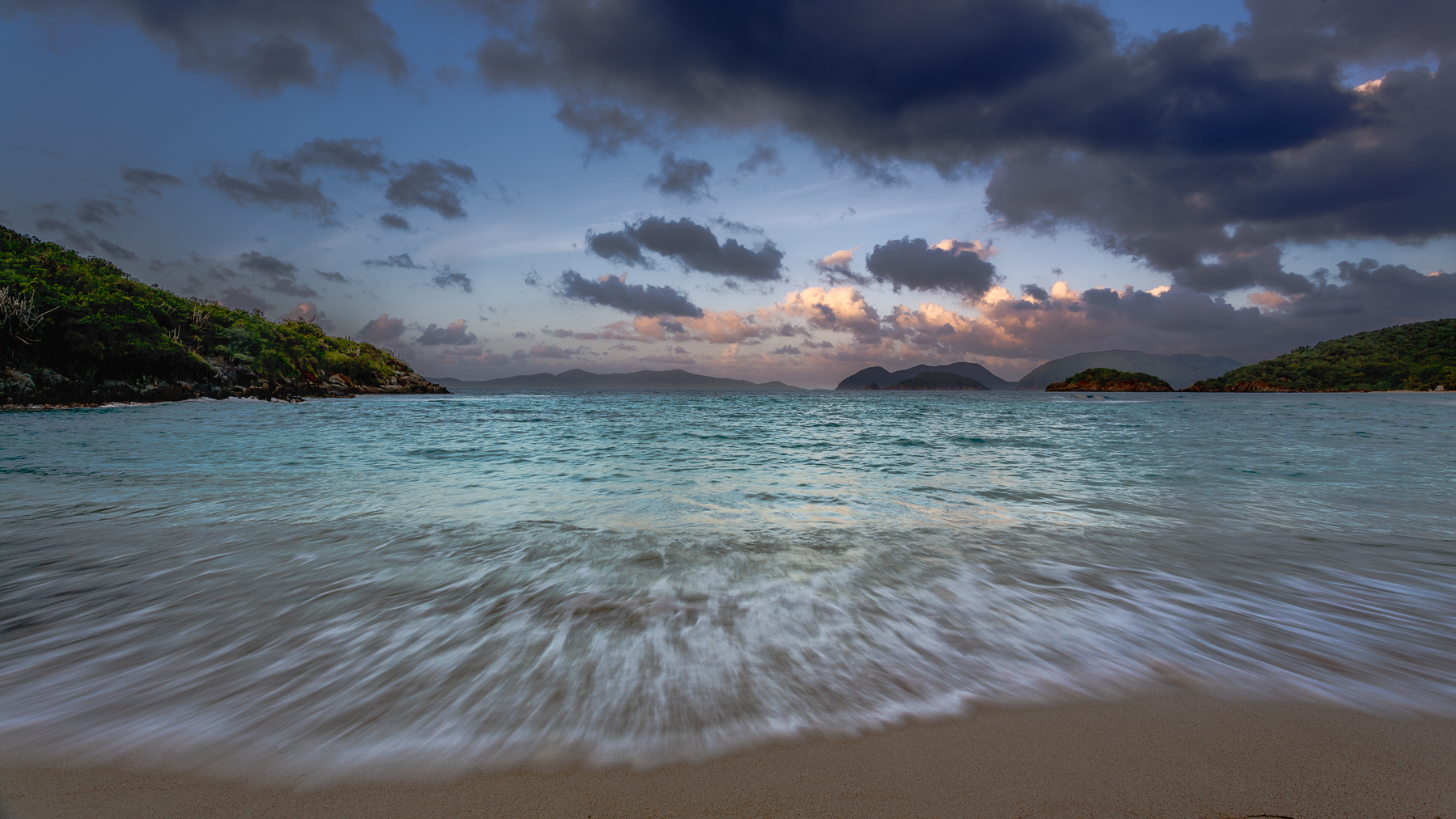
ST JOHN, THE UNSPOILED CARIBBEAN JEM
There is pleasure in the pathless woods, there is rapture in the lonely shore, there is society where none intrudes, by the deep sea, and music in its roar.” – Lord Byron
There are quite a few islands scattered in the Caribbean but not many of them appear to be as spectacular and unspoiled as St John. If you ever visit make sure you go beyond Trunk Bay and you will fall in love, especially if you use your feet, fins, and a four-wheel-drive (St John: Feet, Fins & Four Wheel Drive is a wonderful little book written by Pam Griffin, St John native). It is really hard to believe that a place so authentic and unspoiled lies so close to our shores, just a four-hour flight to St Thomas and a 15-minute ferry ride away.
The island is only 7 miles long by 3 miles wide and is the smallest one of the US Virgin Islands but it kept us busy and enthralled for more than a week with its endless array of spectacular beaches and trails, jaw-dropping views, and its rich and sometimes tragic history.
No wonder so many people had fallen in love before us, including Robert Oppenheimer, the “Father of the Atomic Bomb,” and Laurance Rockefeller, a third-generation Rockefeller, and a well-known philanthropist. We may now enjoy US Virgin Islands National Park because Laurance purchased 5000 acres of the property after becoming mesmerized by St. John’s beauty while sailing in the Caribbean. This land later became Jackson Hole Preserve. With the condition that it never be developed, he gave the land to the National Park Service in 1956.
We were able to explore more than 20 of its more than 39 gorgeous beaches and trek 10 of its trails in a little more than a week. The most breathtaking were: Francis Bay Trail, WaterLemon Cay (a cay is a low island or reef of sand or coral), Ram’s Head and Drunk Bay Trails with their pounding surf and terrible winds, Brown Bay Trail beginning in Princess Bay mangroves, which offered some of the most spectacular snorkeling (turtles and amazing violet lace of the corals, you can see dried-out coral in one of the Drunk Bay pictures).
You can see some of Vitaly’s amazing pictures along with my humble comments below.
One cannot help but wonder at the incredible array of St John’s beaches, different at different times of the day. The water can be calm or turbulent, rip tides or northern swells are quite common at the north shore near Cruz Bay.
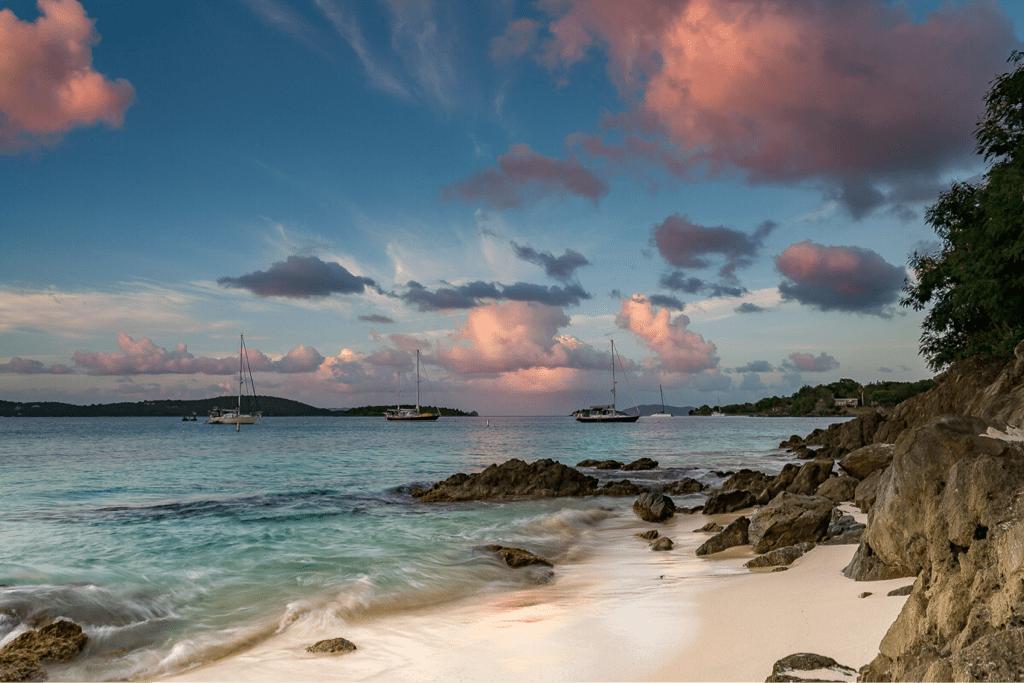
From top to bottom, you may witness breathtaking views of various St. John beaches at various times of day:
1. Moonset in Trunk Bay (this was a full moon, making it a rare occasion to observe moonset at sunrise).
2. Salomon Beach, accessible through the Lind Point Trail and a short trek from our hotel. A lovely, tiny, isolated beach where we saw a double rainbow, got wet and went swimming when it was raining.
3. A image from a postcard of a sunset at Oppenheimer Beach. We discovered this additional teeny, lovely, and romantic beach with the help of the proprietor of our hotel. Almost no parking is available, and the only sign that can be seen from the road is a sizable black iron gate bearing the name Oppenheimer Beach. Similar to countless others before he fell in love with St. John, and acquired a tiny piece of beachfront property from the Gibney family, where he constructed a modest house. Tragically, his daughter committed suicide in that home, and in her will she bequeathed the home and property to the residents of St. John. As a result, the location is both stunning and eerie. The northern swell was present when this photo was shot.
4. A gorgeous, deserted view of Trunk Bay at dusk. Although cruise ship passengers are brought to this beach’s most well-known snorkeling trail, you can have the entire picture-perfect stretch of sand to yourself in the early morning and at sunset.
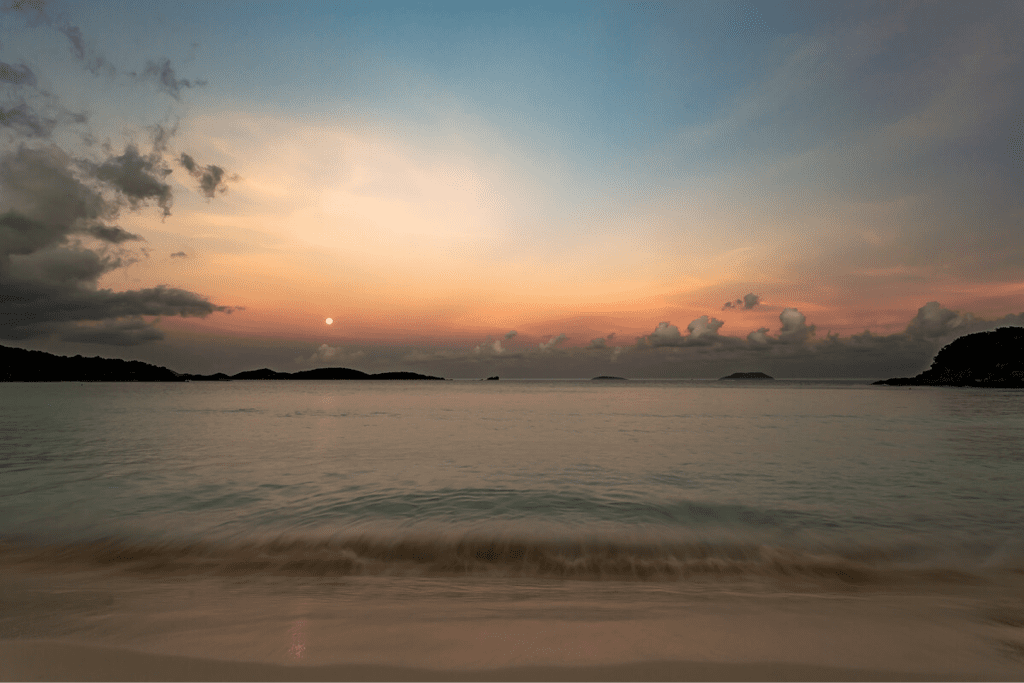
Even though St. John had been inhabited since 770 BC, there weren’t many settlements there until the 1720s. After a brief British occupation, the island was claimed by the Danish government in 1684. The majority of the people on the island were slaves, and sugar plantations dominated the landscape. According to folklore, some slaves reportedly flung themselves off the cliffs near Ram’s Head during the insurrection that killed about a fourth of the population in 1733. Slavery was abolished in Denmark by the government in 1848. The United States purchased St. John from Denmark in 1917. The island is covered in several plantation ruins. The US Virgin Islands National Park, which today spans 7200 acres of land, and 5600 acres of underwater land was established in 1956.
To safeguard and preserve the breathtaking coral gardens and seascapes, Congress extended the Virgin Islands National Park’s limit in 1962 to encompass 5,650 acres of submerged lands. As a result, the park currently makes up nearly 75% of the island’s total land area. My own opinion is that the Rockefeller family genuinely represents both the best and worst of American business, yet we owe them the miracle of many of our National Parks, which are the true treasures of our country.
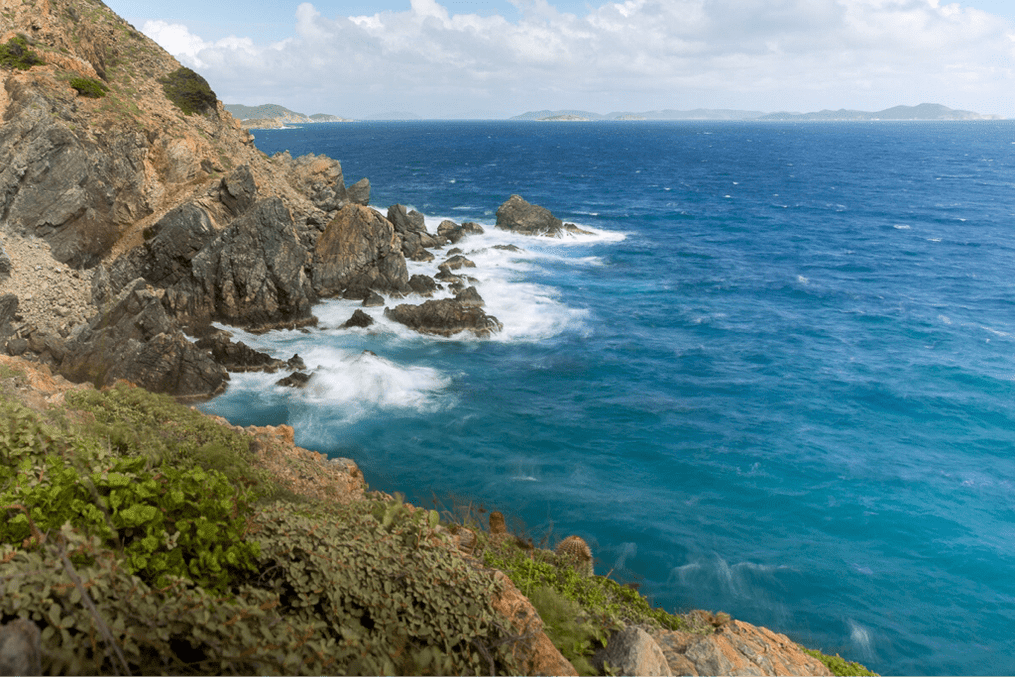
Drunk Bay pictures above. People make sculptures out of coral and rocks they gather on the beach.
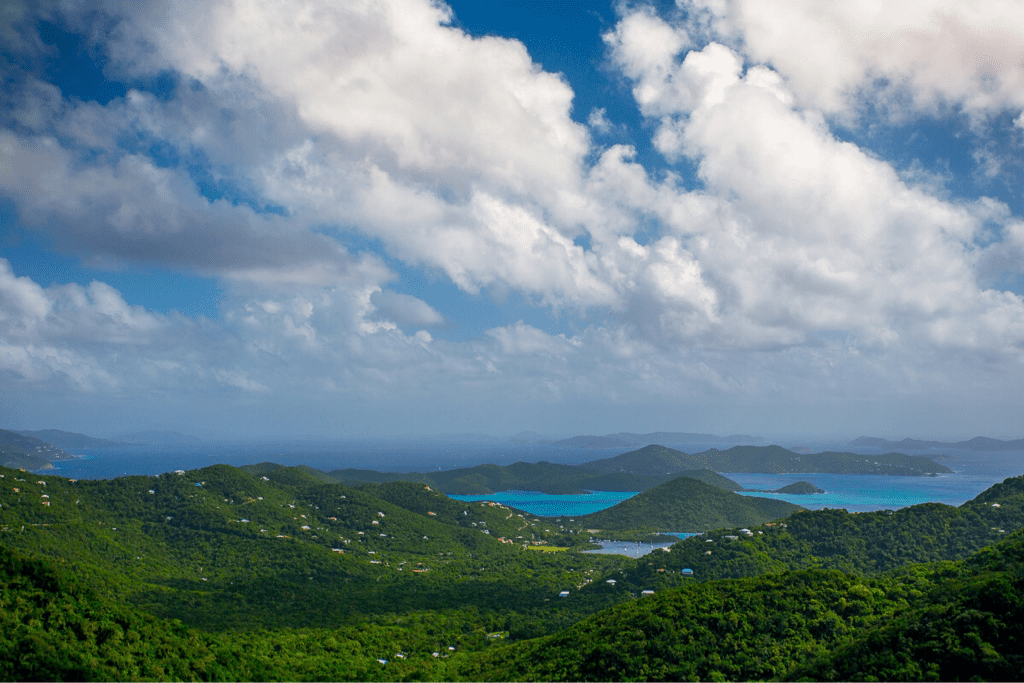
The gallery up top features soursop, yellow pomegranate, breadfruit, and sea grapes, which are all considered to be the fruit of St. John. The fruit of sea grape trees, which are most frequently seen on sandy beaches near the seashore, has a sweet acidic flavor.
Because of Rockefeller, everyone can now visit St. John and enjoy its incredible underwater world, windswept spectacular cliffs, empty, undeveloped white sand beaches, petroglyphs left by Taino Indians, and the ruins of numerous plantations that once stood there and testified to its harsh past.
Remains of sugar plantations are dispersed over the island, demonstrating how nature reclaims itself after humans have left. Below are pictures of Reef Bay Hike: Hermit crabs, plantation ruins, and golden orb spiders.
The last image shows petroglyphs and their reflection in the pool of water. Those were left by Taino Indians who came from Venezuela. They are part of the Reef Bay Trail.
The next gallery showcases the beautiful birds of St John and its famous wandering rooster.
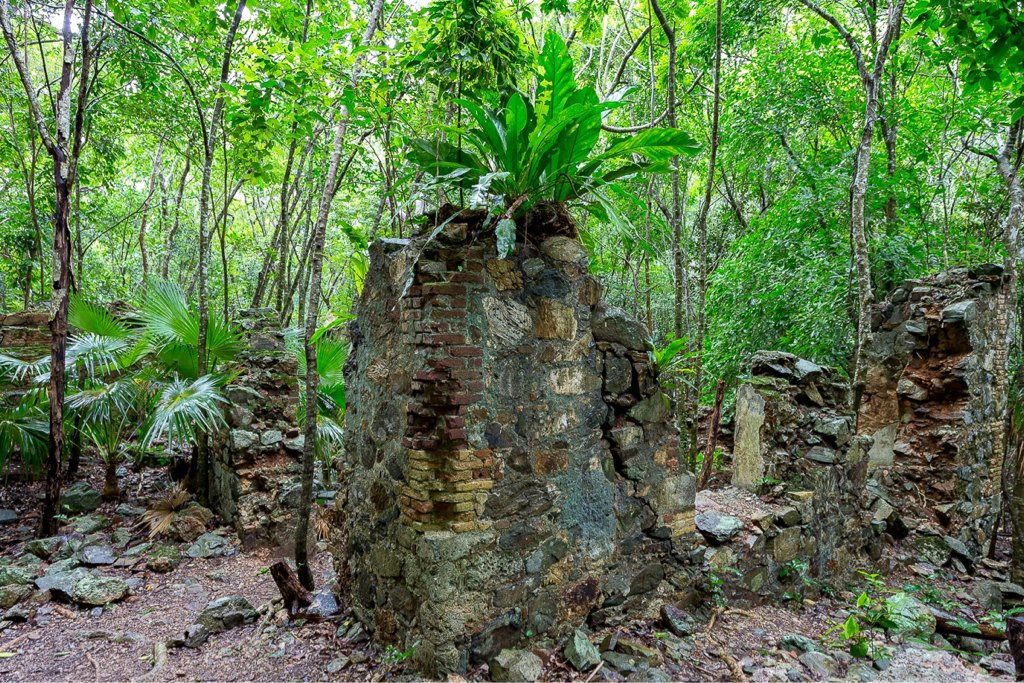
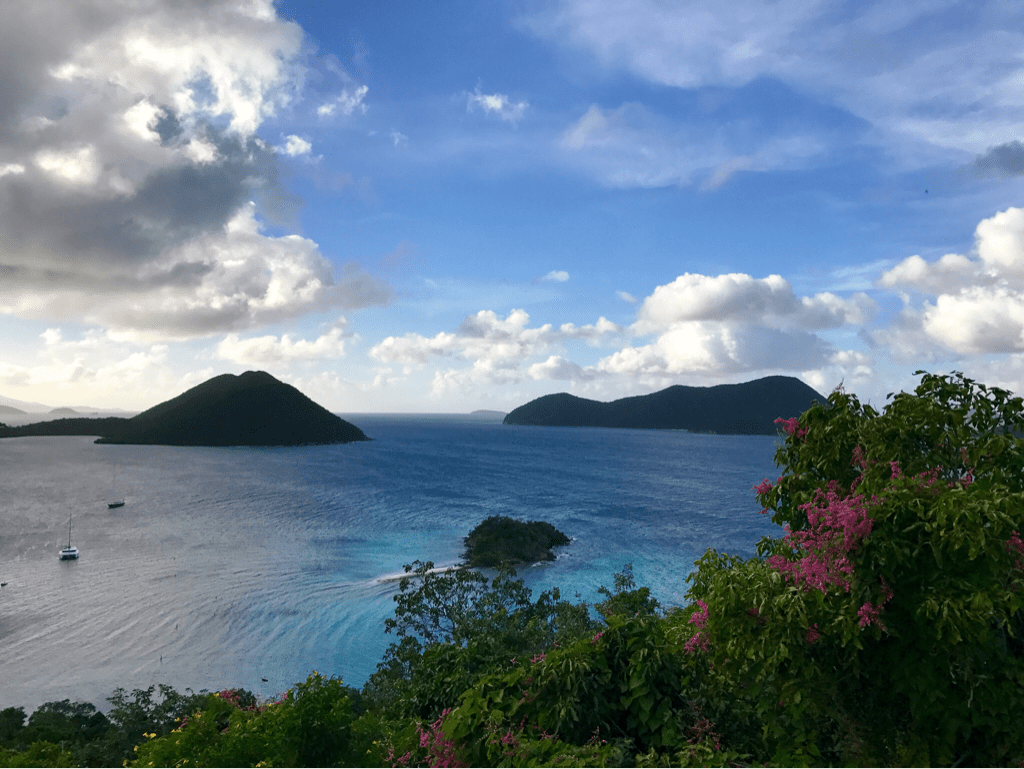
Above and below are views of the Francis Bay area: ruins of the Great Murphy House and Annaberg Plantation.
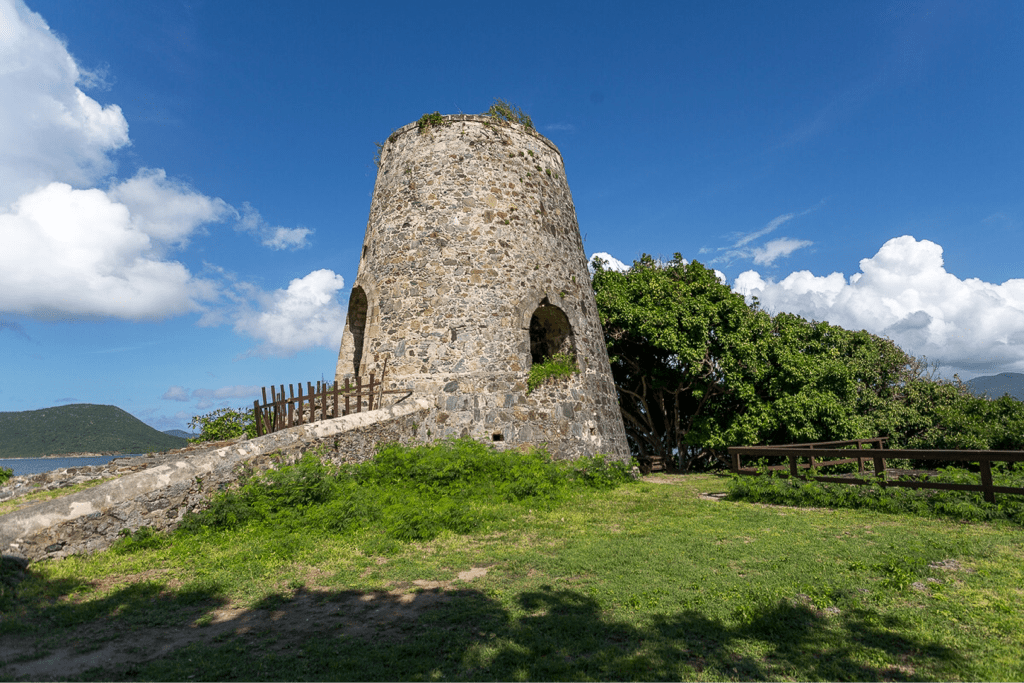
The following gallery shows the sunrise image from our Cruz Bay hotel.
Our favorite pastime was watching sunsets inspired by Asolare, the name of our hotel restaurant. Asolare in Italian means to spend time in a delightful but meaningless way, a thoroughly un-American, but a wonderful concept nonetheless.
